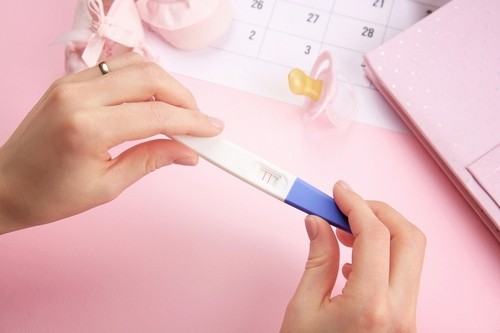For some women who have not given birth, it may not be known what it means – “the waters have passed.” The amniotic fluid leaves after the rupture of the membranes, so an anhydrous period begins, which lasts until the birth of the baby.
At this time, the woman is stressed, stressed and may be scared. She listens to herself and asks herself when the contractions will begin and after how many hours she will have to give birth if the water has passed.
First of all, the expectant mother needs to calm down and slowly gather in the hospital. Amniotic fluid effusion is one of the stages of a normal childbirth.
How long does childbirth begin after water drains
The question is, after how many hours the birth will begin, if the waters have already diverted, it is quite natural. Normally, rupture of the fetal bladder occurs just in the process of childbirth. In the first period, the bubble plays the role of a shock absorber, protecting the child from injury. Its wedging contributes to the disclosure of the cervix. But there comes a time when it is already superfluous and prevents the child from passing through the narrow birth canal. Then the bubble bursts and the waters pour out.
If the water has passed away from the pregnant woman, the contractions will begin at any time (if they have not already begun), after how many hours or minutes this will happen, no one will say for sure. The first contractions are weak and painless, with large gaps. Intensive normal can begin both after 2 hours, and after 6. The second ones are faster, therefore, the contractions begin earlier.

When the water leaves
Normally, this occurs at the end of the first period of labor, when the cervix is opened about 6 cm, before intense contractions.
Another development is possible:
- If the water has diverted to the normal opening of the cervix, but in the presence of contractions and labor, this is considered an early outflow.
- It is also possible that the water may already leave, but there are no contractions. If this happened before the birth, it is a premature outflow.
What will happen if the contractions begin, but the waters have not diverted, how will this affect the birth? There is nothing terrible about this. You need to contact a gynecologist. If this is the beginning of labor, if necessary, a bubble will be pierced in the maternity hospital. If these are false contractions, he will be left intact, but the obstetrician must differentiate these conditions.
How does this happen
How to understand that the waters have departed? This usually occurs after the first contractions and after the cork has come off. They can pour out abundantly, in an amount of 200 ml to 1 liter. A woman has a feeling of urinary incontinence, while she can not stop the flow of fluid flow by contracting the muscles of the sphincter of the bladder. Water can be discharged in 2, or even 3 stages. Some women may feel “popping” when the fetal bladder ruptures before the water drains.

Could it be that the waters moved away, but there were no contractions? This happens when premature discharge of amniotic fluid through microcracks of the membranes. A woman can take them for urinary incontinence or increased profusion of vaginal secretions, since water can come out sparingly, literally drop by drop.
How to understand that the waters have departed?
A plentiful outflow of water a woman will not miss. However, there are frequent cases when the waters diverted while the woman was sleeping at home. In a dream, she may not feel it. If there is no smell and color of urine after awakening on a wet sheet, and even more so if there is a mucous plug – this speaks in favor of water. A cork is a clot of mucus that forms in the cervix during pregnancy.
You can skip the moment of outflow when a woman takes a bath or shower. In this case, the fact that the water flowed without contractions may indicate the presence of a mucous plug in the bath.
In such situations, a woman often doubts and asks questions: did the waters depart and when did this happen, and if the waters really did depart, then what should I do? The answer can be only one – to urgently go to the gynecologist.
When to watch out
Premature discharge of water is common and poses a great threat to both the baby and the woman.
Therefore, you should always be on your guard, especially:
- with increased incidence of urinary incontinence;
- when vaginal discharge becomes more abundant and watery;
- when the discharge becomes more abundant with a change in body position;
- when there is an unpleasant smell of vaginal discharge;
- when the stomach is reduced in size;
- when lowering the abdomen down;
- with pain in the abdomen.
What water is normal?
In the normal course of pregnancy in a healthy woman, amniotic waters are bright, clear, colorless and odorless. The volume of water at the end of pregnancy ranges from 600 ml to 1500 ml. Deviation from these numbers up or down is considered to be low water or high water.
In the presence of pathology of water, the following can change:
- with oxygen starvation of the fetus, they have a greenish tint;
- with the threat of miscarriage and premature detachment of the placenta, they may have a brown or brown color;
- with a bacterial infection, the water will be cloudy, yellow-green in color, with an unpleasant odor.
Why do the waters leave?
This happens when the volume of the fetal bladder under external pressure from contractions decreases – as a result, the internal pressure of the amniotic fluid on its walls increases, and they burst.
However, rupture of the membranes can occur long before the birth process. One of the reasons is the infectious melting of the walls of the fetal bladder. Where it is thin, microcracks form. Also one of the obvious causes of bubble rupture is injury.
Factors contributing to premature or early outflow of water:
- narrow pelvis of a pregnant woman;
- violation of the condition of the cervix of a woman – rigidity, cicatricial changes after abortion or previous childbirth;
- abnormal position of the fetus and multiple pregnancy;
- polyhydramnios;
- exacerbation of a chronic bacterial infection in the vagina and uterus;
- the presence of serious chronic diseases of the mother – diabetes, lupus erythematosus and others.
If there are no contractions
If the water from the woman in labor has already passed, she is naturally interested in how much a child can do without this water. Ideally, the anhydrous period lasts from 4 to 6 hours and ends with the birth of a child. When it exceeds 6 hours, it is already considered long, but this is not a pathology. Danger arises, this period lasts over 72 hours.
Inexperienced expectant mothers are sometimes interested in a gynecologist what to do when the water has moved, for example, 12 hours ago, and there are no contractions. But why wait so long? Immediately after the outflow of water, you need to gather in the hospital. During the day, doctors can begin to stimulate labor or proceed to cesarean section.
Water discharge is an important sign of the onset of the birth process. The premature onset of the process is often subtle and gradual, but it can provoke spontaneous abortion or cause serious pregnancy complications. If a woman noticed that water was leaving her, she should urgently seek professional help from an obstetrician-gynecologist.



